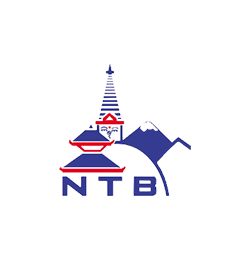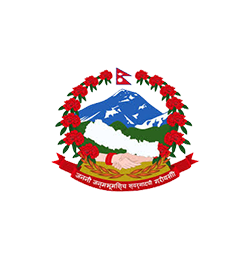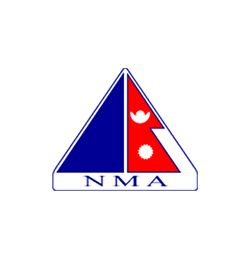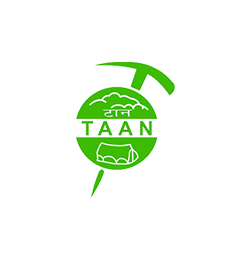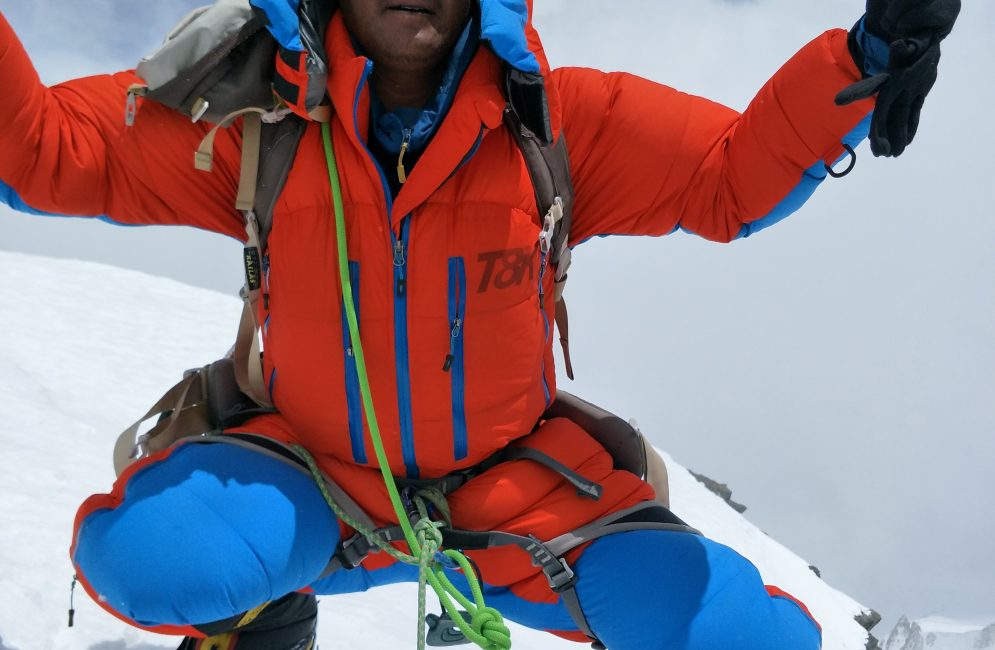

Introduction
Take on the greatest adventure in the world as you venture into the heart of the Everest region. Everest Expedition is just as grand as it sounds and includes scaling the highest mountain in the world, Mt Everest (8848m). The trip is full of natural wonders in the Everest region along with a rich insight into Sherpa culture. As such, the main attraction of the trip is the majestic Himalayas in the Everest region as the journey gradually progresses to the top of the world.
Everest Expedition
A trip that begins with the exploration of the Kathmandu valley meets the mountains via a flight to Lukla. The trek enters the Sagarmatha National Park and reaches Namche Bazaar. Further, you trek across the Khumbu Valley and continue past villages like Tengboche and Dingboche. As the trail heads north with the Khumbu Glacier, you continue to Gorakshep before heading to Everest Base Camp.
The Everest expedition begins from here after you participate in a holy puja and receive blessings from the monks. Then, you continue at a steady pace with plenty of time to acclimatize on the way. The trip itinerary follows the route along with the South Col and passes camps I, II, III, and IV. Finally, climbers make the ascent to the summit of Mt. Everest (8848m). Then, the return trip starts as you retrace your steps back to Lukla and head back to Kathmandu.
Additional Info on the trip
Everest Expedition is a very strenuous journey that requires climbers to be in a peak physical condition. Also, having a strong mental fortitude is important as well. In addition, climbers also must have ample training and skill to scale difficult trails and use climbing equipment. Similarly, the ascent of Mt. Everest is best when done during the spring and autumn seasons. However, even these seasons offer a brief window to climb Everest. So, it is important to study the trip in detail in order to complete the trip.
About Us
At White Hill Adventure, we have an able team to assist you in your ventures in Nepal. We offer various trips with standard services so that our clients can enjoy their trip to the fullest. Moreover, we also give you the option to modify the trip itinerary.
Trip Highlights of Everest Expedition
- Climb the highest mountain in the world, Mt. Everest (8848 m)on earth Scenic South Col route facing out the most panorama of both Nepal and Tibet sides.
- Enjoy the scenery of the Himalayas in the Everest range including mountains like Lhotse, Cho Oyu, and Ama Dablam
- Explore the Sagarmatha National Park and enjoy its rich biodiversity
- Experience the culture and traditions of the Sherpa community
- Following the footsteps of legendary Tenzing and Hillary route to the summit
- An adventure of life-time experience with fulfilling adrenaline climb
Detail Itinerary
Day 01: Arrival day in Nepal overnight stay luxury hotel in Kathmandu (B/B).
Welcome to Nepal! The Everest Expedition begins with your arrival in the historical Kathmandu City. Upon arrival at Tribhuvan International Airport, we’ll warmly receive you and then drive you to the hotel. Enjoy a half-hour long drive through the bustling streets of Kathmandu City. Along the way, you’ll get to witness the vibrant lifestyle of the city-dwellers. You will stay in one of the five-star hotels in the city and enjoy luxury accommodation. In the evening, you can head out to explore the vibrant nightlife of the city. Overnight in Kathmandu.
Day 02: Meeting and preparation overnight stay luxury hotel in Kathmandu (B/B).
The day usually begins with the finest breakfast on the terrace overlooking the beautiful landscape. You can walk up to the terrace in the morning, which offers a clear view of the mountains and sky. We’ll visit you at the hotel and discuss the trip in detail. You can lay any of your queries with us. In the meantime, we'll prepare to procure your documents and begin processing necessary permits for the expedition. The permits generally include paying a royalty to the government, obtaining expedition pass, liaison officer, national park permit, waste disposal, etc. If time permits, you can head out and explore the beautiful city. Overnight in Kathmandu.
Day 03: Meeting and preparation overnight stay luxury hotel in Kathmandu (B/B).
The day begins with a usual schedule. After enjoying your breakfast, you can choose to go out and either explore the city or shop for necessary expedition gear and equipment. You will find many outdoor shops around Thamel that offer gear and equipment at any price range. The outlets of North Face and Sherpa Outdoors are also available. You can choose to undertake a half-day sightseeing tour of the city. The sightseeing tour offers brief visits to some of the most popular UNESCO World Heritage Sites. Kathmandu is home to many UNESCO sites, including Swoyambhunath, Boudhanath, Pashupatinath, Kathmandu Durbar Square, etc. The tour is generally accompanied by an experienced tour guide who will provide you complete details about the tourist sites around the city. Overnight in Kathmandu.
Day 04: Introduction with the guide, Climbing team, and preparation overnight stay luxury hotel in Kathmandu (B/B).
Enjoy the delicious breakfast and prepare to meet your team and staff. Spend the day discussing important details about the Everest Expedition. You will meet your Expedition Guide or Sirdar along with assistant guides. The Sirdar will brief you about the expedition, challenges, weather conditions, trekking lengths, and meals during the trek, and climbing. You will also have a Q&A session with your staff. It is a great time to mingle with the rest of the team. You will get all your permits today. Do not forget to share your preexisting medical condition, allergies, or other physical difficulties with your guide. Overnight in Kathmandu.
Day 05: Kathmandu (Tribhuvan Int' l Airport) to Lukla (Tenzing Hillary Airport) morning 30 minutes scenic flight and walk to Phakding 2,612 m/ 8,570 ft- 3/4 hrs. (B/L/D).
The day begins early. You’ll get up at around 5 in the morning and prepare to embark on a flight from Kathmandu to Lukla. Your expedition guide will come to pick you and others at the hotel and bring you to the airport. After checking in your luggage, you’ll get on the earliest flight to Lukla. A 30min flight covers the distance of 138km from Kathmandu to Lukla. Upon arrival, you can head to the nearest restaurant and enjoy your breakfast. After assessing the entire luggage, you’ll begin trekking. The first day of the trek takes you from Lukla to Phakding, which may take 3-4hr of the walk along the beautiful Dudh Koshi River. Overnight in Phakding.
Day 06: Walk to Namche Bazaar 3,440 m/11,287 ft via Sagarmatha National park check post- 6/7 hrs. (B/L/D).
The day begins with a delicious breakfast overlooking the beautiful Dudh Koshi Valley. You’ll embark on the second day of the trek and begin gradually trekking towards Monjo village. Upon arrival at Monjo, you’ll enter Sagarmatha National Park. It is the first Himalayan national park in the country, inscribed into the UNESCO World Heritage Sites list. It is home to Himalayan wildlife, including Red Panda, Himalayan Pheasant, and Himalayan Black Bear. Enjoy a serene walk along the forested path and cross dangling suspension bridges over the Dudh Koshi River to reach Namche Bazaar. The crowded scene at Namche Bazaar can often be an overwhelming experience. Overnight in Namche.
Day 07: Acclimatization (rest) day in Namche Bazaar (B/L/D).
The day begins with a delicious breakfast overlooking the beautiful Kongde Ri Peak (6187m) towering just above Namche Bazaar. Spend the day acclimatizing before heading onwards to the next destination. Accompanied by your guide, you’ll embark on a sightseeing tour around Namche Bazaar. From here, the tour takes a detour. You will head toward the neighboring village of Khumjung, a small Sherpa village home to Khumjung Monastery. Explore the monastery and the most popular Yeti's scalp preserved inside a glass jar. From here, you'll begin climbing down along the Dingboche Airport and reach Kongde village. Kongde is home to the largest school in the entire region, Edmund Hillary School. After exploring the school, you’ll begin climbing down back to Namche. Overnight in Namche.
Day 08: Walk to Tengboche Monastery 3,860 m/12,665 ft-5/6 hrs (B/L/D).
You’ll wake up to the beautiful sight of Kongde Ri Peak. Enjoy your breakfast and then embark on the trek. The trail leaves Namche and begins to climb through a steep staircase towards Phungi Thanga. Continue trekking upstream along the Dudh Koshi River to reach Phungi Thanga, where you can enjoy your lunch. Leaving Phungi Thanga, you’ll continue trekking north overlooking the beautiful sight of Ama Dablam Peak. Ama Dablam is also known as the Matterhorn of Nepal because of its resemblance to the Swiss alp. Almost after 5-6hr into the trek, you’ll reach Tengboche village, which is home to Tengboche Monastery. It is also the highest Buddhist monastery in the entire region. Overnight in Tyangboche.
Day 09: Walk to Dingboche 4,410 m/14,468 ft -04/5 hrs (B/L/D).
Enjoy a delicious breakfast at the hotel and then embark on a brief tour of Tengboche Monastery. The century-old monastery accommodates thousands of monks. The large monastery faces Ama Dablam in the east. You can visit the prayer halls and meet the monks. Afterward, you’ll leave Tengboche and then embark on a short trek to Dingboche village. The 5-6hr long walk takes you alongside the Dudh Koshi River towards Debuche village. From here, you’ll begin descending downhill towards the Imja Khola. The trail crosses the river and then begins to climb upstream. A short uphill hike brings you to Pangboche Village, where you can enjoy your lunch. The last section of the trail goes along the majestic thousands of Mani stones towards Dingboche.
Day 10: Acclimatization (rest) day in Dingboche, Hike to Nagerjun Hill 5,100 m/16,728 ft, and return (B/L/D).
The day begins early. After breakfast, you’ll embark on a hike to the nearby Nagerjun Hill. You can carry your day pack and embark on a three-hour-long hike along the Imja Khola. The trail leading to Nagerjun Hill offers the impressive views of Lobuche East (6119m), Lobuche West (6145m), Taboche Peak (6367m), Thamserku (6608m), Kangtega (6685m), and Ama Dablam (6856m). The top of the Nagerjun Hill offers the beautiful sight of Pheriche Valley. After spending some time, you’ll continue trekking downhill and reach Dingboche. You can enjoy your late lunch at Dingboche and spend the rest of the day acclimatizing. Overnight in Dingboche.
Day 11: Walk to Lobuche 4,940 m/16,208 ft- 03/4 hrs (B/L/D).
Enjoy your breakfast and then embark on a trek to Lobuche village. Leaving Dingboche, you’ll begin trekking for a few hours before reaching Thukla village. Thukla village lies en route to Lobuche, where you can visit the Climbers Memorial Park. The park got commemorated concerning the great climbers who lost their life while climbing Everest. A short hike from Thukla brings you to Lobuche village situated just beside the massive Lobuche Glacier. Overnight in Lobuche.
Day 12: Walk to Gorakshep 5,164 m/ 16,942 ft- 03/4 hrs (B/L/D)
The day begins with a delicious breakfast overlooking the majestic Lobuche Glacier. Lobuche village lies on the foothill of Lobuche Peak, one of the trekking peaks in Nepal. After breakfast, you’ll embark on the trek and continue walking alongside Lobuche Glacier towards Gorakshep. After a few hours, you’ll leave Lobuche Glacier behind and continue climbing uphill along the Khumbu Glacier. The day ends at Gorakshep, a small hamlet located at the juncture to Everest Base Camp. Overnight in Gorakshep.
Day 13: Walk to Everest Base Camp 5,364 m/17,598 ft – 03/4 hrs (B/L/D).
The trail leaves Gorakshep and heads to Everest Base Camp located at the base of Mount Everest (8848m). The rudimentary campsite at Everest Base Camp accommodates climbers on their expedition to either Mount Everest or Mount Lhotse. After breakfast at Gorakshep, you’ll begin climbing the boulder-strewn trail alongside Khumbu Glacier. The distance of 3.5km to Everest Base Camp covers around 3hr. Once at the base camp, you’ll retreat into the camper’s site. Overnight in Everest Base Camp.
Day 14: Rest and training at Everest Base Camp (B/L/D).
The day begins with a basic breakfast prepared by your Sherpa staff. You will spend two consecutive days resting and acclimatizing at Everest Base Camp before moving to another destination. The base camp offers the best possible location to stay put for days before undertaking the climb. Your expedition leader will round up all the team members, and conduct basic climbing training, including climb gear and equipment such as ice-ax, crampons, oxygen tank and mask, harness and ropes, etc. Overnight in the base camp.
Day15: Rest and training at Everest Base Camp (B/L/D).
Today is another day you’ll spend at the base camp resting and training. The day begins with a basic breakfast prepared by your Sherpa staff. Your expedition leader will round up all the team members and conduct further climbing training, using a ladder and cross-crossing crevasses. The training may include the use of climb equipment. Overnight in the base camp.
Day16: Walk down to Glass Pyramid (Metrological Station) 5,010 m/ 16,432 ft. (B/L/D).
Enjoy a delicious breakfast and then prepare to climb down from the Everest Base Camp. The mobility during the acclimatization period helps to keep your body engaged and active. Leaving the base camp, you’ll begin climbing down to Gorakshep. After a brief rest, you’ll continue driving downhill along the Khumbu Glacier to reach high large Glass Pyramids located at the juncture to Lobuche village. It remains home to a metrological station built in a joint venture of Nepal and Italy. You’ll spend the night inside a cozy lodge. Overnight in Glass Pyramid.
Day17: Rest day in Pyramid place (B/L/D).
The day begins with a delicious breakfast. As a rest day, you'll acclimate and undertake a short hike to the vantage point located close to Lobuche West Peak. This is a great way to exercise and stay fit. Overnight in Glass Pyramid.
Day18: Walk to Everest Base Camp -0 4/5 hrs. (B/L/D).
The day begins with a delicious breakfast overlooking the beautiful Lobuche Peak. Leaving Glass Pyramid behind, you’ll begin tracing the usual route leading to Everest Base Camp. The trail begins to climb alongside Khumbu Glacier and reaches Gorakshep. After a brief rest, you’ll begin climbing the boulder-strewn trail to reach Everest Base Camp. Once at the base camp, you’ll retrace to campers site. Overnight in Base Camp.
Day 19: Rest at Everest Base Camp (B/L/D).
Enjoy your rest time at the base camp. You can take out time to mingle with fellow climbers. This is a great chance to talk with your family back home using the satellite phone or check your social media before leaving the campsite. If time permits, you can interact with the locals to learn more about them. Overnight in Everest Base Camp.
Day 21: Trek to Pumori Base Camp-03 hrs. (B/L/D).
The day begins with breakfast prepared by your Sherpa staff. Prepare your backpack and embark on a short trek to Pumori Base Camp (5200m). Hiking to Pumori Base Camp offers a chance to get extra exercise along with some of the majestic views of the surrounding mountains. Grab the beautiful view of Khumbu Icefall, Mt. Nuptse, and Mt. Pumori. Overnight in Pumori Base Camp.
Day 22: Rest day in Pumori Base Camp (B/L/D).
Enjoy the day resting at the glaciated Pumori Base Camp. The day begins with the beautiful sights of Mt. Nuptse and Mt. Pumori. Here, you can study the southeast trail of Everest leading to the top. Along with acclimatizing, you can indulge in basic ice and rock climbing to keep yourself engaged and active. Overnight in Pumori Base Camp.
Day 23: Walk to Everest Base Camp-02 hrs (B/L/D).
Leaving Pumori Base Camp behind, you’ll begin retracing your path back to Everest Base Camp. The trail goes past Khumbu Glacier along the serene Khumbu Icefall to the campsite. The short hike lasting 2hr ends at Everest Base Camp. You can spend the rest of the day resting inside your tent or sunbathing. Overnight in Everest Base Camp.
Day 24: Perform Puja by holy Lama/ Monk Buddhist priest for a safe and successful climb (B/L/D).
The day begins with a delicious breakfast. Today is an important day as you participate in the ritual before climbing the Everest. The Sherpas believe that spirits and gods inhabit the mountains. Without taking proper permission from them, climbing the mountain can prove to be life-threatening. As the team member, you must respect the ritual and partake in the complex Buddhist hymns. The Buddhist monks will offer you blessings at the end. You can use the rest of the day to prepare your clothing, gear, and equipment. Overnight in Everest Base Camp.
Day 25: Climb to Camp I at 5,800 m/ 19,000 ft- 05/6 hrs (B/L/D).
The day begins early. You’ll leave the base camp and begin approaching Khumbu Icefall. It is the most challenging part of the climb. Khumbu Icefall comprises of fragile ice-blocks. You must cross the entire icefall section to reach Camp I at 5,800 meters. Khumbu Icefall is prone to many accidents, so you must be careful at this part. Spend the night at the glaciated site or Camp I. This is where all the goods will be during the climb. Overnight at Camp I.
Day 26: Return to Everest Base Camp (B/L/D).
Leaving Camp I behind, you’ll begin climbing down back to Everest Base Camp. The 3hr long journey goes past the treacherous Khumbu Icefall. Upon arrival, you will rest at the Everest Base Camp. Although a challenging affair, you can consult with your expedition leader to take a hike to the nearby Kala Patthar situated at the altitude of 5,643 meters.
Day 27: Rest day in Everest Base Camp (B/L/D).
You will spend a few more days resting at Everest Base Camp. This is another useful day to prepare for the upcoming climb. You can indulge in training, such as climbing ladders and crossing crevasses. The section between Camp I and Camp II often encounters deadly crevasses. This will give enough time for the expedition leaders and base camp staff to determine the upcoming weather conditions. Overnight in Everest Base Camp.
Day 28: Rest day in Everest Base Camp (B/L/D).
The day begins with a delicious breakfast. You can enjoy the day either resting at the campsite or indulging in a brief hike around different vantage points around the base camp. You can talk with your staff and indulge in assessing the climb gear and equipment. All the necessary gear, equipment, and ration are garrisoned at Everest Base Camp. Overnight at the campsite.
Day 29: Climb to Camp I 5,800 m/ 19,000 ft- 05/6 hrs (B/L/D).
The day begins early. You'll begin preparing to climb to Camp I. Leave the base camp and begin climbing towards Khumbu Icefall. You'll cross the most challenging part of the climb, Khumbu Icefall that comprises fragile ice-blocks. Do remember, Khumbu Icefall is prone to many accidents. You must follow the guidelines of your team leader along the climb. Spend the night at the glaciated site or Camp I. Overnight in Camp I
Day 30: Climb to Camp II at 6,200 m/20,300 ft- 03/4 hrs (B/L/D).
The day begins with a warm breakfast prepared by your Sherpa staff. The Ice Doctors or Sherpa climbers leave early to fix ropes. You will follow them later. Led by the expedition leader, everyone will make a straight line and begin climbing the glaciated path to reach Camp II. You will encounter a few ices and snow sections along with few crevasses en route to Camp II. After a few hours of the climb, you'll arrive beside the huge ice-wall of Lhotse Peak. Camp II (6200m) is set up just beside the ice-wall. Overnight in Camp II.
Day 31: Rest at Camp II (B/L/D).
Spend the day resting and acclimatizing at Camp II. It is essential to let your body get used to the local weather and altitude before approaching further. As you're already above 6,000 meters, it is necessary to assess your overall mental and physical condition before climbing. The staff will store enough garrison and equipment at Camp II. Overnight in Camp II.
Day 32: Walk back to Everest Base Camp-05/6 hrs (B/L/D).
The ordeal doesn’t end here. To help your body pump more oxygen, you’ll begin descending back to the base camp. Retrace your path and continue walking through ice and crevasses en route to Camp I. From here, you'll retreat to Khumbu Icefall and climb down to the base camp. You can choose to spend the rest of the day inside the tent. Overnight in the base camp.
Day 33: Rest at Everest Base Camp (B/L/D).
You will enjoy a small window to rest at the base camp. Three consecutive days of rest and acclimatization follows at Everest Base Camp. Spend the day hiking around the boulder-strewn place and get enough oxygen. Get a chance to talk to the locals. Overnight in the base camp.
Day 34: Rest day at Everest Base Camp (B/L/D)
Enjoy a full-day of resting at Everest Base Camp. Get in touch with your Sherpa staff. Sherpa is the ethnic tribe inhabiting the greater Everest region for centuries. They originally came from Tibet in the north. Rearing yak for milk, cheese, and milk is the common occupation among the locals. Yak milk and cheese often get a larger market in Kathmandu. You can choose to buy some to take back home. Overnight in Everest Base Camp.
Day 35: Rest day at Everest Base Camp (B/L/D).
You can use this day to prepare for the upcoming climb. Your expedition leader will brief the entire team about the next endeavor. Spend the rest of the day mingling with fellow climbers and enjoying a small party. Overnight in the base camp.
Day 36: Climb to Camp II – 7/8 hrs (B/L/D).
The day begins early as you finish your breakfast and prepare to embark on the climb. Today, you'll take on the challenging task of climbing to Camp II. You'll leave early and begin climbing the Khumbu Icefall. After 3-4hr of the climb, you'll arrive at Camp I, where you can enjoy a warm lunch. After a brief rest, you’ll begin tracking the glaciated path en route to Camp II. Prepare to tackle the difficult ice section and crevasses en route to Camp II. Overnight in Camp II.
Day 37: Rest day at Camp II. (B/L/D).
Spend the day acclimatizing at Camp II. As you’re above 6,000 meters, it is essential to keep your body pumping more oxygen. Your expedition leader will offer useful tips about the expedition. Enjoy the beautiful sight of the Lhotse wall. Overnight in Camp II.
Day 38: Climb to Camp III at 7,300 m/24,000 ft- 03/4 hrs (B/L/D).
Leaving Camp II, you'll begin tracing the glaciated path along the Lhotse Wall towards Camp III at 7,300 meters. The trail begins to climb through snow crevasses to reach the Western Crown. Although the climb from Camp II to Camp III is fairly easy, most climbers encounter bad cough in this trail. Also known as Khumbu cough, the coughing becomes prevalent above 7,000 meters. The trail climbs to the South Col, the sharp-edged notch, which lies between Mount Everest and Lhotse Peak. Overnight in Camp III.
Day 39: Descend to Camp II- 02/3 hrs (B/L/D).
Instead of resting at Camp III, you’ll retrace your path and head back to Camp II. If any climber has encountered Khumbu cough, retreating to Camp II offers temporary relief. The trail begins to climb down through the snowy path along the Lhotse wall towards Camp II. Overnight in Camp II.
Day 40: Descend to Everest Base Camp- 05/6 hrs (B/L/D).
Leaving Camp III behind, you'll begin retracing your path back to Everest Base Camp. Enjoy a short window during the climb to head back to the campsite for the optimum rest. Retrace your path and continue trekking down to Camp I. After a brief rest, you'll begin climbing the Khumbu Icefall back to the base camp. Overnight in the base camp.
Day 41: Rest day at Everest Base Camp (B/L/D).
Enjoy the day resting at the base camp. Your expedition leader will brief you about the upcoming climb. The next approach will be the final summit of Everest. Take time to talk with your Sherpa staff and learn more about the use of climb gear and equipment. The ice doctor is the best person to tell you about ropes and rope used during the expedition. They often use single rope, static & rescue, half rope, twine, rope, and rope bags while establishing ropes on the expedition.
Day 42: Rest day at Everest Base Camp (B/L/D).
Enjoy the day resting at the base camp. Today, you can get in touch with your expedition leader and talk about usual climb gear and equipment. Climbing gears during Everest Expedition often include cords, slings, webbings, carabineers, protection, quickdraws, pulleys, belay and rappel, and crampons, ice ax, rappelling gloves, and ascenders & descenders. The expedition leader can tell you how to use the tools during the climb best.
Day 43: Rest day at Everest Base Camp (B/L/D).
Enjoy the day resting at the base camp. If you haven't tried Sherpa tea, you should give it a try. Sherpa Tea is specially prepared by boiling special tea. It is mixed with yak butter. Most locals prefer drinking it mixed with salt. A cup of tea helps to keep you warm and full. The nutrients and protein in the tea provide enough energy. Overnight in the base camp.
Day 44: Rest day in Everest Base Camp (B/L/D).
Enjoy the day resting at the base camp. You can ask your guide to tell you about the history of Everest climbing, the folk stories related to the mountain, and how Sherpas have helped achieve some of the most popular expeditions. The British Expedition first climbed Everest in 1953. Led by Col. John Hunt, the attempts to the summit were made multiple times before Edmund Hillary, and Tenzing Norgay Sherpa finally summited the peak. Overnight in the base camp.
Day 45: Climb to Camp I (B/L/D).
Enjoy a delicious breakfast. After preparing your gear and equipment, you’ll begin climbing through Khumbu Icefall en route to Camp I. The challenging endeavor will end in a matter of few hours. Once at Camp I, you can help garrison the necessary gear and equipment. Spend the rest of the day acclimatizing. Overnight at Camp I.
Day 46: Climb to Camp II -3/4 hrs (B/L/D).
The day begins early. After breakfast, you'll embark on the short climb to Camp II. Trace your path along the difficult crevasses to reach Camp II. Enjoy the rest of the day, relaxing inside the tent at Camp II. Overnight in Camp II.
Day 47: Rest day at Camp II (B/L/D).
You’ll spend the day resting at Camp II before climbing further. You can discuss with the teammate and Sherpa staff about the upcoming climb. Here on, you’ll make the continuous ascent to the top. Be wary of Khumbu cough, which is most common at this altitude. Overnight in Camp II.
Day 48: Climb to Camp III at 7,300 m/24,000 ft- 03/4 hrs (B/L/D).
Leaving Camp II behind, you'll begin climbing towards Western Crown. The relatively easy trail goes past snowy terrain. The trail leads to South Col. Although the climb completes within 4hr, the entire ordeal is very fatiguing. Overnight in Camp III.
Day 49: Climb to Camp IV at 8,000 m/26,200 ft – 08/9 hrs (B/L/D).
The day begins early. After eating your breakfast, you'll prepare for the challenging climb. Leaving Camp III, you'll head to Camp IV, located just below the "Death Zone." As you begin climbing, the valley opens up, offering a nice way of Everest's summit and Lhotse. You'll climb past the Geneva Spur and Yellow Band en route to Camp IV. It will be the final camp before you approach the summit. Camp IV serves as the launch-pad to the summit. After a tiring day, you can enjoy your meal and immediately go to sleep. Enough rest is required before you can approach the summit the next day.
Day 50: Early morning summit Mt. EVEREST 8,848 m/29,028 ft back to Camp IV-15/16 hrs (B/L/D).
The day rather begins early. You’ll wake up way before dawn and prepare for the final climb. Prepare your headlights and then embark on the climb. From Camp IV, you’ll approach the death-zone, which lies over 8,000 meters. It is essential to complete the climb quickly, so you spend the least time possible at the death-zone. The entire climb may span over 9hr. As you begin climbing, you’ll approach the arduous “The Balcony. “
After crossing the notorious rocky ledge, you’ll begin climbing the South Col towards the Hillary Step. It is one of the most difficult sections, where only one person can cross at a time. It often encounters traffic jams during the peak climbing season when hundreds of climbers try to cross the Hillary Step at the same time. After crossing the Hillary Step, you'll begin tracing the final ridge leading to the top. After an arduous climb, you'll reach the top where you can catch the magnificent sights of the surrounding peaks, including the mesmerizing Tibetan Plateau on the other. Retrace your path and head back to Camp IV as soon as possible. Overnight in Camp IV.
Day 51: Back to Camp II- 08/9 hrs (B/L/D).
Leaving Camp IV, you'll begin climbing down Geneva Spur and Yellow Band to Camp III. The easy walk takes you to Camp II. Spend the night at Camp II before heading back to the base camp.
Day 52: Rest day at Camp II (B/L/D).
Today is a rest day. You can spend the day exploring the surrounding. Catch the beautiful sight of Lhotse Wall. You may witness many climbers going down on this day. As the summit window is small, many climbers attempt to make it to the summit every day. Overnight in Camp II.
Day 53: Descend to Everest Base Camp- 04/5 hrs (B/L/D).
Leaving Camp II, you'll begin retracing your path back to Everest Base Camp. A short downhill climb takes you to Camp I. After enjoying your lunch; you can retrace your path to cross Khumbu Icefall and reach the Everest Base Camp.
Day 54: Rest day at Everest Base Camp (B/L/D).
The ordeal is complete. You can celebrate the completion of the climb with your teammates. The team often throws a party at the campsite to celebrate the successful summit. If you feel any mental or physical difficulties, you can visit the nearest health post. Enjoy the day exploring the beautiful sceneries. Overnight in Everest Base Camp.
Day 55: Walk to Pheriche – 06/7 hrs (B/L/D).
Leaving Everest Base Camp, you’ll begin climbing to Dudh Koshi Valley. A short downhill climb along the Khumbu Glacier brings you to Gorakshep. Continue trekking downhill and walk along the Lobuche Glacier to reach Dingboche. After enjoying your lunch, you’ll continue retracing your path back to Pheriche village. Overnight in Pheriche.
Day 56: Walk to Namche (3,440 m/11,287 ft- 04/5 hrs (B/L/D).
The day begins with a delicious breakfast. After breakfast, you’ll begin climbing along the Imja Khola trail towards Tengboche. If you haven’t visited the Tengboche Monastery, you can do so now. The trail climbs to Namche Bazaar via Phungi Thenga. Overnight in Namche.
Day 57: Walk to Lukla 2,860 m/9,383 ft- 06/7 hrs (B/L/D).
Retrace your final path back to Lukla. Catch the beautiful sight of Kongde Ri Peak as you head towards Monjo. After exiting Sagarmatha National Park, you’ll continue trekking down to Phakding and later to Lukla. At Lukla, you can enjoy the completion of the trip with a small party. Overnight in Lukla.
Day 58: Fly from Lukla to Kathmandu transfer to hotel overnight in a luxury hotel in Kathmandu (B/B).
An early morning flight takes your from Lukla to Kathmandu. Enjoy a 30min long flight along with the beautiful view of Mount Everest en route to Kathmandu. Upon arrival, you can head back to the hotel and enjoy your breakfast. In the evening, we’ll take you for a delicious farewell dinner with the team. Overnight in Kathmandu.
Day 59: Rest day in Kathmandu overnight in a luxury hotel (B/B).
Today is a rest day. You can spend the day either exploring the beautiful Kathmandu Valley or relaxing in the hotel. You can visit the Thamel town to indulge in a relaxing massage or to shop for souvenirs. Overnight in Kathmandu.
Day 60: Final departure day for homeward bound.
Today is the last day in Nepal. We’ll drive you to the airport as your flight schedule.
Cost Information
Cost Includes
- All Airport pickups and drops.
- Kathmandu to Lukla both way flight tickets.
- All meals (Breakfast/Lunch/Dinner) while trekking/climbing as indicated by the itinerary.
- Tea/Coffee.
- All mountain Tea house and Camping accommodation.
- Mt. Everest Climbing Permit.
- Garbage deposit.
- Sagarmatha National Park and Local Permit Cards.
- English speaking, trained and experienced trekking and climbing Sherpa Guide
- Required Porter.
- All insurance for guide and porter.
- Guide and Porter costs including their salary, equipment, transportation, food and teahouse.
- North face quality tents and good kitchen equipment.
- Group Climbing equipment (like ropes, Ice-Screw, snow bar….).
- First AID and Medical Kit.
- All needed Oxygen Cylinders.
- Welcome and farewell dinner.
- All Government and Local taxes.
Cost Excludes
- Personal Climbing and trekking gears (equipment).
- Duffel/trekking bags.
- Lunch and Dinner in Kathmandu.
- Your Personal Insurance.
- Personal Expenses (Laundry Service, Phone Calls, Battery Charge, Bar bills, Hot Shower etc.)
- Tips for Guide, Porter.
Equipment
For Head
- Sun hat / Scarf
- Sunglasses and Headlight
For Upper Body
- Water Proof Jacket
- Down Jacket / Warm Jacket
- Light Weight T-shirt
For Lower body
- Water Proof Pants
- Running tights
- Light Weight Pant
- Warm Pants
For hand
- Gloves
For Feet
- Thin Inner socks
- Woolen socks
- Trekking boots (preferred comfortable boots)
Other accessories
- Good Quality Sleeping bag
- Water bottle etc
- Suncream
- Water purification tablets
- Toiletries (Toilet paper etc)
- Warm hat
- Trekking Bag Etc.
Other Climbing Equipment
- Harness
- Acender/Decender
- Crampons
- Ice ax
- Plastic boot
- Carabineers
- Helmet etc.

